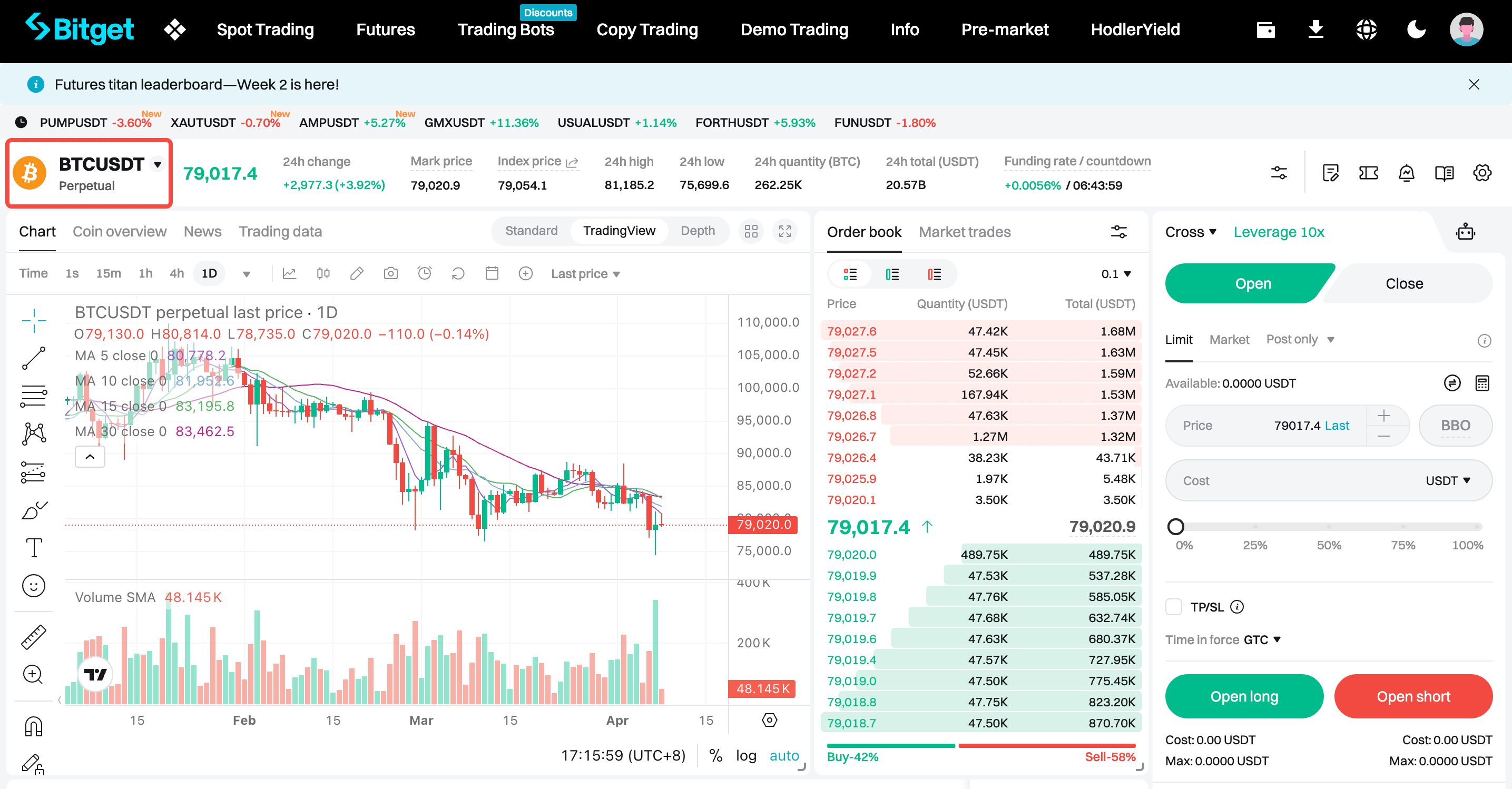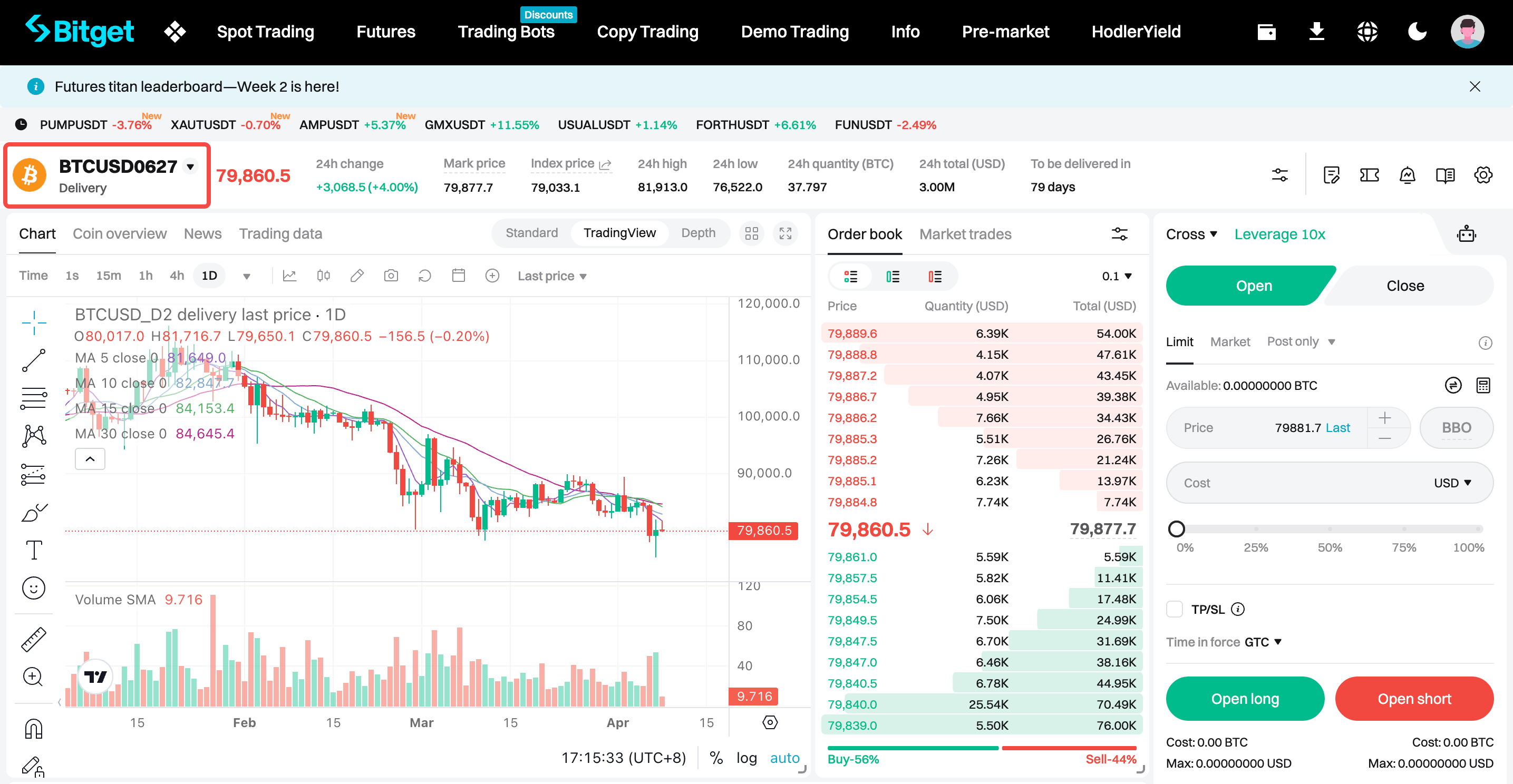Bitget beginner's guide — A comprehensive introduction to perpetual futures and delivery futures
Bitget offers investors two main futures types: perpetual futures and delivery futures. Both are crypto-settled futures trading products that allow investors to go long or short and potentially profit from price volatility. In simple terms, perpetual futures have no settlement date and do not expire, while delivery futures have a fixed settlement date.
What are perpetual futures?

Bitget perpetual futures are derivative futures with no expiration date. Investors can hold positions indefinitely. A funding fee mechanism helps keep the futures price aligned with the spot market price. Bitget offers USDT-M perpetual futures and USDC-M perpetual futures.
Key features
1. No settlement date
○ Unlike delivery futures, perpetual futures do not expire and can be held indefinitely.
2. Funding fee mechanism
○ Funding fees are settled every 8 hours. The difference between the futures price and the spot price is offset by the funding fee payments between the long and short parties.
○ When the funding rate is positive, longs pay shorts. When the funding rate is negative, shorts pay longs.
3. Margin trading
○ Perpetual futures trading on Bitget supports high leverage (e.g. 125x) for both long and short positions, which can amplify both potential returns and risks.
|
Trading pairs |
BTCUSDT, ETHUSDT, BGBUSDT, and more |
|
Expiry date |
USDT-M perpetual futures have no expiration date |
|
Types |
Settled in USDT. Futures are quoted in base currencies such as BTC, ETH, and BGB |
|
Minimum order size |
Minimum order size varies by futures trading pair |
|
Fees |
Funding fees and transaction fees |
|
Position mode |
One-way mode and hedge mode |
|
Order placement |
Place order by quantity or by cost |
Click here to learn more about Bitget USDT-M perpetual futures.
What are delivery futures?

Bitget delivery futures is a derivative product where the buyer and seller agree to trade (buy or sell) a specific cryptocurrency at a predetermined price on a specified future date.
Example: Bitcoin delivery futures
• Futures contract details:
○ Settlement date: December 31, 2022
○ Settlement price: $20,000
○ Settlement amount: 5 BTC
• Obligations:
○ Seller: Must sell 5 BTC at $20,000, regardless of market price.
○ Buyer: Must buy 5 BTC at $20,000, regardless of market price.
• Settlement process: On the settlement day, the system automatically closes positions based on the weighted average price during the 30 minutes prior to settlement, helping prevent market manipulation. After delivery, the profit and loss is settled in USDT and the contract is terminated.
• Early closing: You may manually close your position at any time before the settlement date.
Perpetual futures vs. delivery futures
|
Comparison |
Perpetual futures |
Delivery futures |
|
Expiry date |
None; can be held indefinitely |
Fixed settlement date |
|
Settlement method |
No physical delivery |
Cash or physical delivery upon expiry |
|
Price peg |
Pegged to index price by funding fees |
Follows spot price directly |
|
Funding fee |
Regular payment (between longs and shorts) |
None |
|
Leverage |
Higher (e.g. 125x) |
Usually lower |
|
Liquidity |
Higher, active trading |
Relatively lower |
Key differences:
• Expiry date: The main difference is that perpetual futures do not have a settlement date. They can be held indefinitely unless liquidated, while delivery futures have a fixed settlement date.
• Funding fee: Since perpetual futures don't expire or have a delivery date, they rely on funding fees to stay aligned with the spot price.
Related articles
Share

